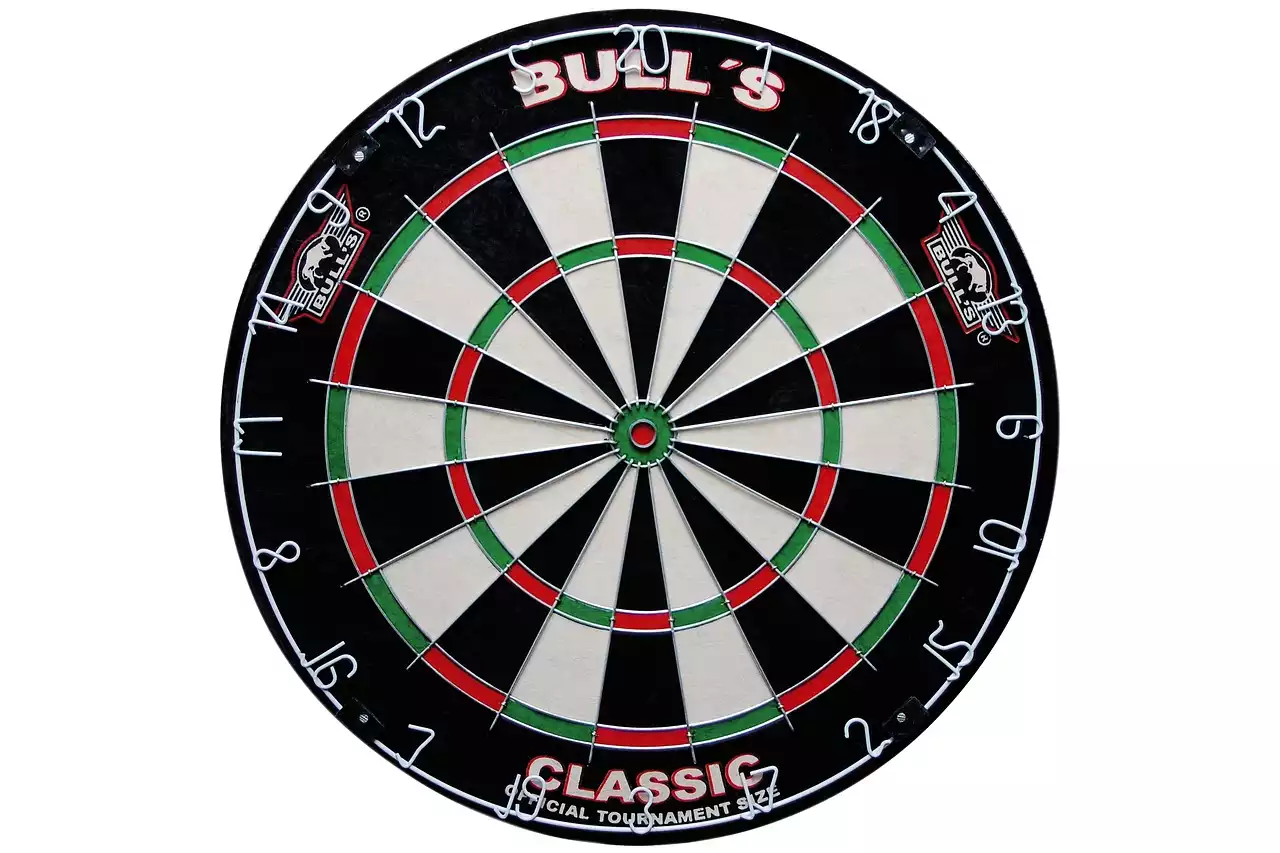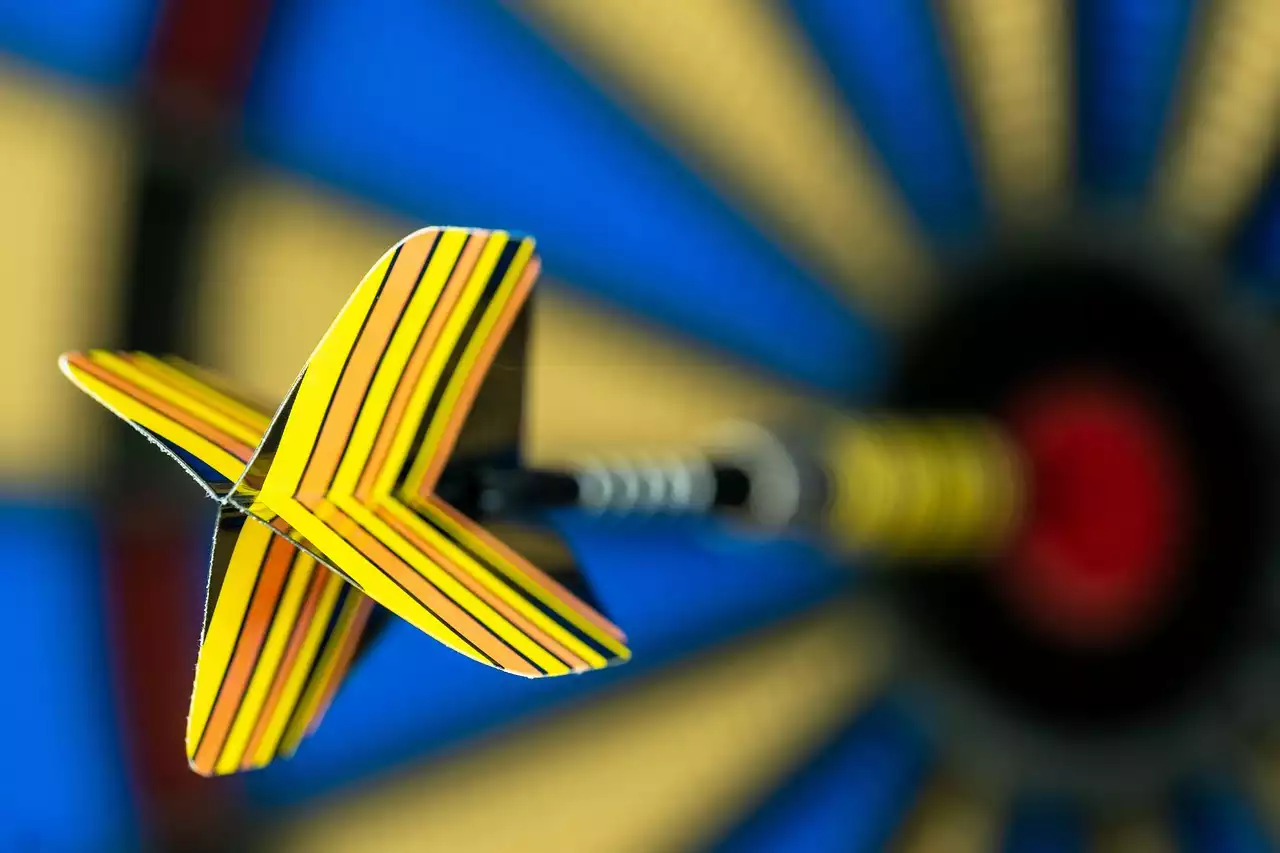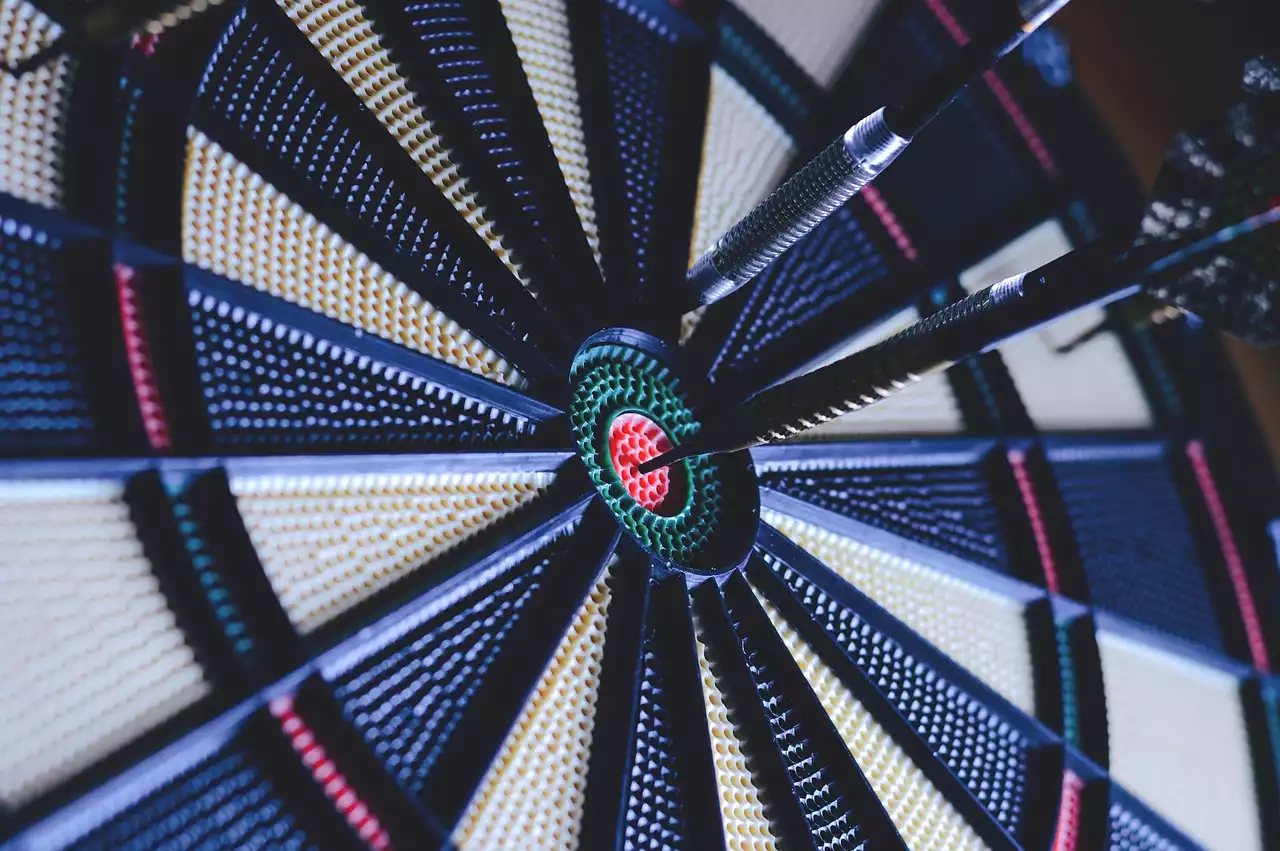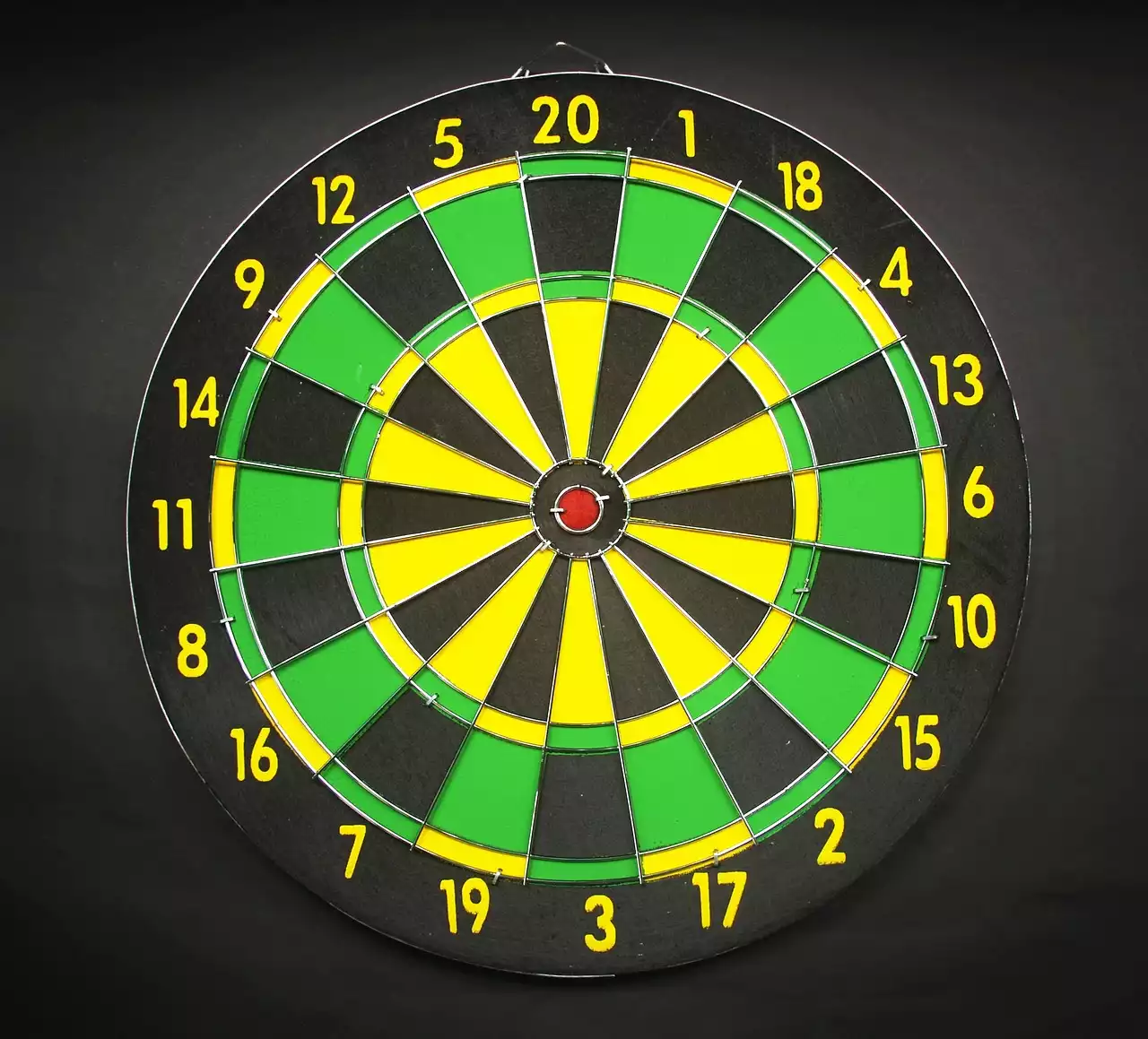The benefits of regular practice for darts players
Regular practice is the cornerstone of success for any darts player. Not only does it help improve your skills, but it also enhances your muscle memory, hand-eye coordination, and focus. By dedicating time to practice, you'll develop the necessary skills and techniques needed to consistently hit the target and achieve higher scores. Additionally, regular practice builds confidence and helps you stay calm under pressure during competitive games. So, if you're serious about becoming a better darts player, commit to a practice routine and watch your game soar to new heights.
Practice is not just about throwing darts at the board. It's about deliberate and focused repetition of specific techniques and strategies. By structuring your practice sessions, you can maximize your improvement and make the most out of your time. In the following sections, we'll explore the top 10 practice techniques that will take your darts game to the next level.
Understanding the different types of dart practice techniques
Before diving into the specific practice techniques, let's take a moment to understand the different types of practice that can benefit darts players. While all practice is valuable, certain techniques target specific areas of improvement. By incorporating a variety of practice methods into your routine, you'll develop a well-rounded skill set that covers all aspects of the game. The key is to strike a balance between honing your strengths and improving your weaknesses. With that in mind, let's explore the top 10 practice techniques for darts players.
Technique 1: Target practice
Target practice is the foundation of any darts player's training routine. It involves focusing on hitting specific areas of the dartboard consistently. Start by aiming for the bullseye and gradually work your way outwards, targeting different sections of the board. This technique helps improve your accuracy and aim, as well as your ability to control the speed and trajectory of your throws. To make target practice more challenging, set specific goals for yourself, such as hitting a certain number of bullseyes in a row or landing each dart within a specific section of the board. Remember to focus on your technique and maintain a consistent throwing motion throughout your practice session.
To enhance the effectiveness of target practice, consider using specialized training aids such as dart mats with target zones or dartboards with built-in scoring systems. These tools provide instant feedback on your accuracy and allow you to track your progress over time. Additionally, practicing with different dart weights and barrel designs can help you find the perfect combination that suits your throwing style.
Technique 2: Accuracy drills
Accuracy drills are designed to fine-tune your throwing precision and consistency. These drills often involve aiming for specific targets or patterns on the dartboard and repeating the throws multiple times. For example, you can practice hitting specific numbers or sections of the board repeatedly, gradually increasing the difficulty as you improve. Another effective accuracy drill is the "around the clock" exercise, where you aim to hit each number on the dartboard in sequential order. This drill helps improve your accuracy across the entire board and challenges you to adjust your aim quickly.
To make accuracy drills more engaging, set time limits or compete against a friend to see who can hit the targets with the highest accuracy. Remember to focus on your grip, stance, and throwing motion during these drills, as consistency in these areas is key to improving your accuracy.
Technique 3: Scoring practice
Scoring practice is essential for darts players who want to maximize their points during games. This technique involves focusing on hitting high-scoring areas of the dartboard consistently. Start by targeting the triple 20 segment, as it offers the highest point value per dart. Gradually work your way around the dartboard, aiming for other high-scoring areas such as the triple 19, triple 18, and so on. By practicing scoring shots, you'll develop the muscle memory and aim necessary to consistently hit these high-value segments during competitive play.
To make scoring practice more challenging, try setting specific point goals for each round or game. For example, aim to score a certain number of points within a given number of darts. This will help you improve your focus, decision-making, and strategic thinking during real games.
Technique 4: Practice games
While individual practice techniques are essential for skill development, practicing in a game-like setting adds an extra level of excitement and pressure. Incorporate practice games into your routine to simulate real match situations and improve your ability to perform under pressure. Popular practice games for darts include "501," "Cricket," and "Around the Clock." These games not only help improve your overall gameplay but also provide an opportunity to practice different strategies and shot selections.
When playing practice games, treat them as seriously as you would a competitive match. Focus on your technique, maintain a consistent rhythm, and try to replicate the pressure and intensity of a real game. By practicing in a game-like environment, you'll develop the mental fortitude and composure needed to succeed in actual competitions.
HOW TO THROW DARTS STRAIGHT! Practice Game
Technique 5: Mental practice and visualization
Darts is as much a mental game as it is a physical one. Mental practice and visualization techniques can greatly enhance your performance on the dartboard. Take some time before each practice session to visualize yourself hitting the bullseye consistently, executing perfect throws, and maintaining a calm and focused state of mind. By visualizing success and positive outcomes, you'll program your mind to perform at its best when it matters most.
In addition to visualization, incorporate mental exercises into your practice routine. These exercises can range from simple breathing techniques to more advanced mindfulness practices. By training your mind to stay present and focused, you'll be able to block out distractions and perform at your peak during games. Remember, mental practice is just as important as physical practice when it comes to darts.
Technique 6: Physical conditioning for darts players
While darts may not require the same level of physical exertion as other sports, maintaining good physical conditioning can greatly benefit your game. Engage in regular exercise routines that improve your strength, flexibility, and endurance. Strengthening your core muscles, in particular, can help stabilize your stance and improve your throwing motion. Incorporate exercises such as planks, squats, and lunges into your fitness regimen to enhance your overall darts performance.
Additionally, maintaining a healthy lifestyle with proper nutrition and sufficient rest is crucial for optimal performance. A well-rested and nourished body will have the energy and focus needed to excel on the dartboard. Prioritize sleep, eat a balanced diet, and stay hydrated to ensure you're in peak condition for practice and competitions.
Technique 7: Analyzing and learning from your practice sessions
To make the most out of your practice sessions, it's essential to analyze and learn from your performance. After each practice session, take the time to review your throws, identify areas for improvement, and set goals for future sessions. Pay attention to your grip, stance, and throwing technique, and make adjustments as necessary. Use video recording tools or ask a friend to observe your throws to gain a different perspective on your form. By analyzing your practice sessions, you'll be able to pinpoint weaknesses, track progress, and make targeted improvements.
Technique 8: Practicing with a partner or joining a darts league
Practicing alone can sometimes become monotonous and lack the competitive edge that comes with playing against others. Consider practicing with a partner or joining a local darts league to enhance your skills and experience. Playing against others allows you to engage in friendly competition, learn from different playing styles, and develop your ability to perform under pressure. In addition, practicing with a partner provides an opportunity for feedback, collaboration, and shared learning.
If joining a darts league is not feasible, organize regular practice sessions with fellow darts enthusiasts in your community. Create a supportive environment where you can challenge each other, exchange tips, and motivate one another to improve. Remember, iron sharpens iron, and practicing with others can greatly accelerate your progress as a darts player.
Technique 9: Utilizing technology for practice improvement
In today's digital age, technology offers a wide range of tools and resources to enhance your darts practice. Take advantage of digital dartboards with built-in scoring systems and interactive features that track your performance and provide real-time feedback. These advanced dartboards allow you to analyze your throwing patterns, identify areas for improvement, and monitor your progress over time. Additionally, smartphone apps and online platforms offer practice routines, tutorials, and training programs tailored to darts players of all skill levels. Explore these technological advancements to supplement your practice routine and gain a competitive edge.
Technique 10: Consistency and dedication in your practice routine
Last but certainly not least, consistency and dedication are crucial for long-term improvement in darts. Set aside regular practice time and stick to your routine, even when motivation is low. Remember that progress may not always be linear, and there will be ups and downs along the way. Stay committed to your goals, maintain a positive mindset, and embrace the journey of continuous improvement. With each practice session, you'll inch closer to mastering the art of darts and achieving your full potential on the dartboard.
The key to success in darts lies in consistent and focused practice. By incorporating the top 10 practice techniques mentioned in this article into your routine, you'll develop the skills, strategies, and mental fortitude needed to excel on the dartboard. From target practice and accuracy drills to mental visualization and physical conditioning, each technique plays a crucial role in honing your darts game. Remember to analyze and learn from your practice sessions, seek opportunities to compete against others, and utilize technology to enhance your practice experience. With dedication, persistence, and a love for the game, you too can become a darts champion. So pick up those darts, clear some space, and let the practice begin!










